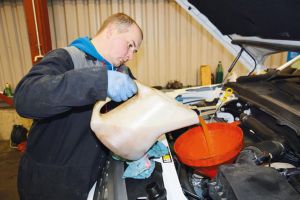S
Shane Wilkinson
Guest
Not only does regular servicing keep your car healthy, it will also help maintain value when you come around to selling it. A full service history is very attractive to buyers and a necessity for many, while a complete main dealer service history can be even more valuable.
Keeping up with the required service intervals should help the engine to continue to run efficiently, and reduce the likelihood of a number of mechanical failures, too. So although a service may cost a fair amount, it does represent a worthwhile investment.
The cost of servicing can fluctuate depending on a number of factors such as the size of your engine, the complexity of the car, or even the manufacturer. If you are buying a new car, most manufacturers offer service plans where you pay a monthly amount, and these plans may also include MOT testing, roadside assistance, and a mechanical warranty. There are plans available for used cars, too, though these can be more expensive. Both new and used car servicing plans tend to last between two and five years.
An alternative to manufacturer-approved service schemes is to use an independent garage. The law states that manufacturers can no longer void your warranty if you choose to have your vehicle maintained in this way.
However, if using an independent garage it is advisable to double check their labour rate and whether they are using manufacturer-approved parts. If a garage is using substandard parts then this could do more harm than good to your finances as they will likely be less effective and wear out faster - as the saying goes “buy cheap, buy twice”.

MOTs are a necessary expense by law, but you can save money here, too. Some dealers incentivise customer loyalty by offering free MoTs for life, as long as the car is serviced at the dealer it was bought from. But another route you can go down is to get your car inspected by a council-run test centre. Council-run MoT centres do not carry out any repairs, which means the mechanics doing the inspection have less incentive to fail your car in order to make some extra money. So you can guarantee that any MoT failure is a genuine one.
Doing your own pre-MoT check can also help you save, as latest figures reveal more than a quarter of MoT failures come from faulty light bulbs and low-pressure tyres. Both are a cheap and simple DIY fix, and sorting them out in advance means you won’t have to pay for a retest which can cost up to half the full MoT rate.
What to know more about your car’s MoT? Click here to find out what an MoT is, how much it costs and how long it takes.
Continue reading...
Keeping up with the required service intervals should help the engine to continue to run efficiently, and reduce the likelihood of a number of mechanical failures, too. So although a service may cost a fair amount, it does represent a worthwhile investment.
- SEE MORE Most reliable cars to buy
The cost of servicing can fluctuate depending on a number of factors such as the size of your engine, the complexity of the car, or even the manufacturer. If you are buying a new car, most manufacturers offer service plans where you pay a monthly amount, and these plans may also include MOT testing, roadside assistance, and a mechanical warranty. There are plans available for used cars, too, though these can be more expensive. Both new and used car servicing plans tend to last between two and five years.
An alternative to manufacturer-approved service schemes is to use an independent garage. The law states that manufacturers can no longer void your warranty if you choose to have your vehicle maintained in this way.
However, if using an independent garage it is advisable to double check their labour rate and whether they are using manufacturer-approved parts. If a garage is using substandard parts then this could do more harm than good to your finances as they will likely be less effective and wear out faster - as the saying goes “buy cheap, buy twice”.

MOTs are a necessary expense by law, but you can save money here, too. Some dealers incentivise customer loyalty by offering free MoTs for life, as long as the car is serviced at the dealer it was bought from. But another route you can go down is to get your car inspected by a council-run test centre. Council-run MoT centres do not carry out any repairs, which means the mechanics doing the inspection have less incentive to fail your car in order to make some extra money. So you can guarantee that any MoT failure is a genuine one.
Doing your own pre-MoT check can also help you save, as latest figures reveal more than a quarter of MoT failures come from faulty light bulbs and low-pressure tyres. Both are a cheap and simple DIY fix, and sorting them out in advance means you won’t have to pay for a retest which can cost up to half the full MoT rate.
What to know more about your car’s MoT? Click here to find out what an MoT is, how much it costs and how long it takes.
Continue reading...
